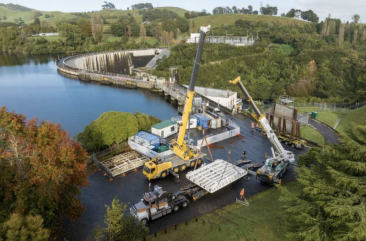
Mercury is nearing the completion of the second power generation unit as part of its $90 million upgrade of the Karapiro hydro station on the Waikato River in the North Island of New Zealand. This marks a significant milestone in the three-year project, with the third and final unit expected to commence in October.
Mercury Executive GM Generation, Stew Hamilton, highlighted the importance of this achievement: “When upgraded, the Karapiro hydro station will provide an additional 5MW per generation unit. This will increase its capacity from 96MW to 112.4MW (32GWH/year), enough to power 19,000 homes with renewable energy.”
Hamilton emphasized the collaboration with project partner Andritz Hydro to ensure efficient and seamless installation of the Karapiro hydro station units. “Maintenance and enhancements of our hydro stations are important as we work towards helping the country move towards greater use of renewable energy,” he said.
On Monday, July 15, heavy machinery was used to install a new 40-tonne water intake gate at the top of Karapiro Dam. This is the second of three gates being replaced after 75 years of operation. Ashhurst Engineering and Construction is responsible for constructing and installing all three gates, each of which took six people about a year to fabricate. The gates measure 8m wide, 6m high, and 0.75m deep.
A special trailer will transport the new gate to the dam for fitting. After installation, the gate will undergo testing before becoming operational in late August. The full installation and commissioning of all units are expected by August 2025.
This upgrade is the first replacement of the generation units at Karapiro hydro station since its commissioning in 1948, ensuring Karapiro can generate power for another 50 years. Hamilton noted: “Our nine hydro stations on the Waikato River have been working hard to keep New Zealand powered, some for more than 75 years. For nearly a decade, we’ve had significant investment in refurbishing our stations, and that will likely continue over the next 15 years. We want to protect these assets to ensure they can manage water flow in a way that looks after the environment but can also optimise energy.”


